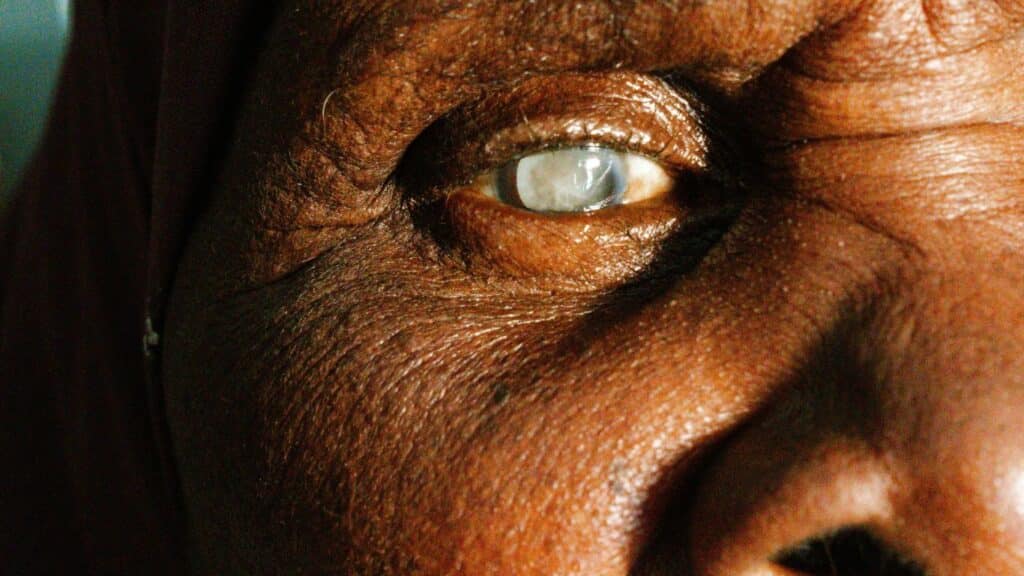LASIK surgery has become one of the most popular elective surgeries worldwide, giving millions the chance for clearer vision without needing glasses or contact lenses. This laser-based procedure corrects common vision problems like nearsightedness, farsightedness, and astigmatism by reshaping the cornea. If you're planning your day around this life-changing surgery, you might wonder, "How long does LASIK surgery take?"
The length of the laser vision correction surgery can affect your plans and shape your expectations for recovery and results. Many people expect it to take hours, but they are often surprised to find that the actual surgery only takes minutes. At TVLC, we know how important it is to match expectations with reality. Our team of eye doctors and surgeons is happy to put you at ease by answering all your questions about laser eye surgery.
In this article, we'll discuss the typical timeline for a LASIK procedure and what you can expect from start to finish.
Book Your Appointment Today & See The World Clearly!
Preparing for LASIK surgery involves a comprehensive evaluation to ensure it is the right option for you and that all potential risks are addressed. Understanding each step of the pre-surgery process can help put your mind at ease and set you on the path to a successful outcome.
The first consultation is an important step where your eye health and vision needs are assessed. During this time, a complete eye exam is done, which includes checking the thickness of your cornea and mapping the surface of your eye. This consultation usually lasts about one to two hours, giving you enough time for thorough assessments and discussions with your surgeon.
Before your surgery, it's important to prepare well to ensure your comfort and the success of the procedure. You’ll meet with the care team to review pre-surgery instructions and take any prescribed medications to prevent discomfort or infection. Following these guidelines is crucial, as they affect how well the surgery goes and how you recover. Good preparation can help ease your anxiety and lead to better results from your LASIK procedure.
Getting ready for LASIK surgery involves a series of steps designed to ensure the procedure goes smoothly and produces the best outcomes.
Before your LASIK surgery, there are important steps to ensure you're a good candidate and to get ready for the procedure. This includes a thorough eye exam to check your overall eye health and the shape of your corneas. You'll need to stop wearing contact lenses for a while before the surgery so your corneas can return to their natural shape. You'll also get instructions on any medications and preparations needed before the surgery.
A critical aspect of the LASIK procedure is the numbing of your eyes to prevent any discomfort during the surgery. This is achieved using specialized eye drops that administer local anesthesia, ensuring that the eyes feel comfortable and pain-free throughout the process.
Preparing for LASIK on the day of surgery usually takes 30 minutes to an hour. During this time, the surgical team will go over instructions, make sure your eyes are numb, and get you comfortable for the procedure.
The LASIK surgery itself is remarkably quick. Each eye typically takes about 15 seconds to 30 seconds and is completely painless. This swift application helps minimize overall surgical time, often allowing both eyes to be completed within less than a minute.
Immediately following the laser treatment, you'll undergo a brief post-surgery eye examination to ensure everything appears as expected. This examination typically takes just a few minutes. You'll then spend some time in a recovery room, usually around 15 to 30 minutes, before being discharged with protective eyewear or sunglasses and detailed recovery instructions.
Going to follow-up appointments is crucial for maintaining eye health and tracking the healing process. The first follow-up is usually scheduled 24 to 48 hours after surgery so the surgeon can check how the eye is healing and address any immediate concerns. After that, you'll have regular follow-ups at one week, one month, and three months post-surgery.
As the field of vision correction advances, LASIK has become a popular choice due to its efficiency and short recovery period compared to other procedures.
LASIK generally offers a quicker recovery time and shorter overall procedure than other surgeries like PRK (Photorefractive Keratectomy) and LASEK (Laser-Assisted Sub-Epithelial Keratectomy). PRK and LASEK may involve longer recovery periods because the outer layer of the cornea must heal naturally, often taking several days to weeks.
Improvements in laser technology have greatly shortened the time required for LASIK surgery. New lasers, like the femtosecond laser, help speed up the LASIK procedure by allowing the surgeon to create the flap quicker and smoother, especially since the flap is created with a laser instead of a blade. These advancements not only decrease the time the eye is exposed to the laser but also lead to more accurate results, shortening the overall surgery time.
Understanding the factors that affect LASIK surgery duration is crucial for patients planning their procedure.
The skill and experience of the surgeon can greatly affect how long the LASIK procedure takes. More experienced surgeons usually perform the surgery more quickly because they are familiar with the details of the process and have honed their skills. Their effective use of advanced technology and quick, accurate decision-making help reduce the time spent under the laser while ensuring high-quality results.
For example, here at TVLC, our board-certified eye surgeon, Dr. Jason D. Bullajian, has over 20 years of experience in performing LASIK surgery, with over 10,000 refractive surgery procedures under his belt. With this noteworthy experience, you can rest assured that your LASIK procedure will not only be time-effective but also safe.
Book Your Appointment Today & See The World Clearly!
Patient-specific factors, such as the anatomy of the eye and pre-existing conditions, can also impact the length of the LASIK surgery. Differences in corneal thickness, pupil size, and vision correction can lead to variations in procedure time. Pre-existing conditions, such as astigmatism or dry eye syndrome, can complicate the surgery and extend the time needed for corrections. By catering the procedure to the individual characteristics of the eye, surgeons ensure effective and safe vision correction tailored to each patient's needs.
Recovering from LASIK surgery is a step-by-step process that requires careful attention to achieve the best results.
Right after LASIK surgery, the body starts to heal. Patients usually see quick improvements in their vision within 24 to 48 hours and can return to most daily activities soon after. During this early recovery, it’s normal for the eyes to feel a bit irritated, watery, or have blurred vision.
Many patients notice a big improvement in their vision within a few days, but it can take several weeks for complete clarity to settle in. Following the surgeon's post-operative care instructions is important for the best results during this time.
Long-term healing and stabilizing vision after surgery can take different amounts of time for each patient, usually between three to six months. During this time, the eye adjusts and improves, leading to better vision clarity and comfort. How quickly a patient heals depends on their recovery and how well they follow up with care. By six months, most patients can expect stable and optimal vision if they follow the recommended guidelines.
Preparing for LASIK surgery involves careful planning to ensure a smooth and successful experience.
On your LASIK surgery day, it's important to plan for both the procedure and recovery. Make sure to follow your surgeon's pre-surgery instructions, like avoiding makeup around your eyes.
The surgery is quick, usually about 20 minutes for both eyes, but factor in time for check-in and post-op observation. It's best to take the whole day off to relax and handle any discomfort.
You won't be able to drive after the surgery, so arrange for a family member or friend to take you home. Having someone with you can provide support and help with post-op care.
Recovery time after surgery varies, but patients often want to know when they can return to regular activities like work and driving. While many see improved vision within 24 to 48 hours, it’s important to avoid strenuous activities initially and follow your surgeon’s post-op care instructions for optimal healing.
Most can return to work within one to three days, depending on comfort levels with their vision. Driving is generally safe to resume once you feel confident and have your surgeon’s approval, usually within a few days.
LASIK surgery typically lasts only about 15 seconds per eye, but it's still safe. The procedure is quick because of advanced laser technology that provides precision and control, so longer surgery times aren't needed.
It's normal to have concerns about how fast LASIK is done, but these worries are balanced by thorough pre-operative assessment and planning. Surgeons use detailed diagnostic information to create a personalized surgical plan, making sure that even quick procedures are effectively suited to each person.
LASIK surgery is highly precise, even when done quickly, thanks to the utilization of both laser femtosecond and excimer lasers. These tools allow for accurate and customized reshaping of the cornea, which lowers risks and improves results.
LASIK eye surgery procedure only takes 15-20 seconds for each eye. Therefore, LASIK surgery is a quick yet highly effective method for vision correction, thanks to advanced laser technology and meticulous pre-operative planning. The process is swift without compromising on safety or quality, allowing for rapid recovery and lasting results.
At TVLC, we prioritize your safety and ensure that you are in the capable hands of our expert eye surgeons. With their extensive training and experience, you can count on a procedure tailored to your specific needs, resulting in clear vision and peace of mind.
Book Your Appointment Today & See The World Clearly!



